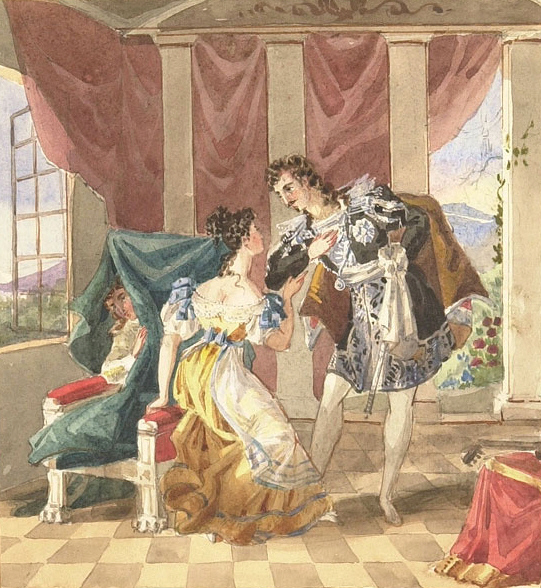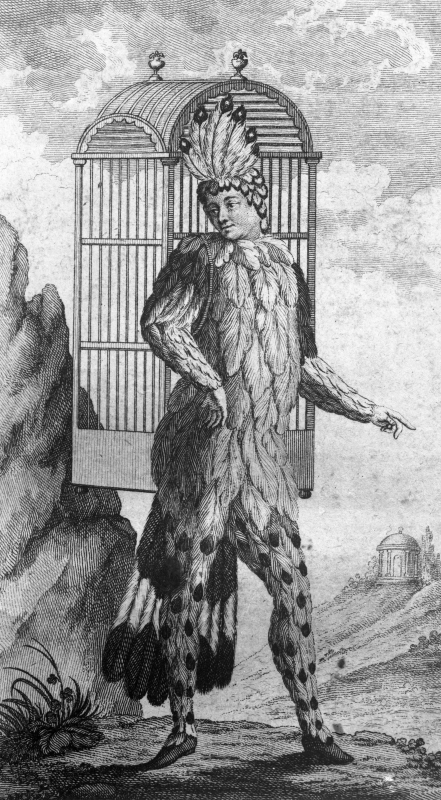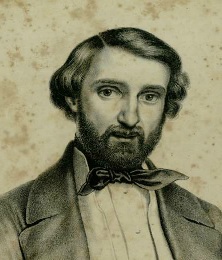|
Jasmin Bašić
Jasmin Bašić (born 7 December 1971) is a Bosnian tenor and author. He graduated in 2003 and obtained his Master of Music Degree (Vocal performance and pedagogy) from University of Sarajevo in 2006 under famous and world's recognized soprano Radmila Bakočević Belgrade (Serbia). Up to 2009, he specialized with the Wiener Staatsoper ''Kammersängerin'' Olivera Miljaković in Vienna (Austria). He is employed at the National Theatre Sarajevo as opera soloist and is recognized as vocal pedagogue. Apart from that he also held solo concerts, and has collaborated with Sarajevo Philharmonic Orchestra and Orchester Pons Artis from Vienna. In 2016. also jubilee opera season, he performed the duty of artistic director of the opera in Sarajevo. Opera repertoire * Nabucco (Verdi) – Ismaele * Eugene Onegin (Tschaikowsky) – Lenski * Hasanaginica (Horozić) – Judge of Imotski * Nikola Šubić Zrinski (opera) (Zajc) – Great Vesire * The Magic Flute (Mozart) – Monostatos * Don Giov ... [...More Info...] [...Related Items...] OR: [Wikipedia] [Google] [Baidu] |
Sarajevo
Sarajevo ( ), ; ''see Names of European cities in different languages (Q–T)#S, names in other languages'' is the Capital city, capital and List of cities in Bosnia and Herzegovina, largest city of Bosnia and Herzegovina, with a population of 275,524 in its administrative limits. The Sarajevo metropolitan area with its surrounding municipalities has a population of 592,714 people. Located within the greater Sarajevo valley of Bosnia (region), Bosnia, it is surrounded by the Dinaric Alps and situated along the Miljacka River in the heart of the Balkans, a region of Southeastern Europe. Sarajevo is the political, financial, social, and cultural centre of Bosnia and Herzegovina and a prominent centre of culture in the Balkans. It exerts region-wide influence in entertainment, media, fashion, and the arts. Due to its long history of religious and cultural diversity, Sarajevo is sometimes called the "Jerusalem of Europe" or "Jerusalem of the Balkans". It is one of a few major Europea ... [...More Info...] [...Related Items...] OR: [Wikipedia] [Google] [Baidu] |
Wiener Staatsoper
The Vienna State Opera (, ) is a historic opera house and opera company based in Vienna, Austria. The 1,709-seat Renaissance Revival venue was the first major building on the Vienna Ring Road. It was built from 1861 to 1869 following plans by August Sicard von Sicardsburg and Eduard van der Nüll, and designs by Josef Hlávka. The opera house was inaugurated as the "Vienna Court Opera" (''Wiener Hofoper'') in the presence of Emperor Franz Joseph I and Empress Elisabeth of Austria. It became known by its current name after the establishment of the First Austrian Republic in 1921. The Vienna State Opera is the successor of the old Vienna Court Opera (built in 1636 inside the Hofburg). The new site was chosen and the construction paid by Emperor Franz Joseph in 1861. The members of the Vienna Philharmonic are recruited from the Vienna State Opera's orchestra. The building is also the home of the Vienna State Ballet, and it hosts the annual Vienna Opera Ball during the ca ... [...More Info...] [...Related Items...] OR: [Wikipedia] [Google] [Baidu] |
Le Convenienze Ed Inconvenienze Teatrali
''Le convenienze ed inconvenienze teatrali'' (''Conventions and Inconveniences of the Stage''), also known as ''Viva la mamma'' and ''Viva la Diva'', is a dramma giocoso, or opera, in two acts by Gaetano Donizetti. The Italian libretto was written by Domenico Gilardoni, adapted from Antonio Simeone Sografi's plays ''Le convenienze teatrali'' (1794) and ''Le inconvenienze teatrali'' (1800). The title refers to the ''convenienze'', which were the rules relating to the ranking of singers (''primo'', ''secondo'', ''comprimario'') in 19th-century Italian opera, and the number of scenes, arias etc. that they were entitled to expect. Performance history 19th century The opera was originally a one-act ''farsa'' based on ''Le convenienze teatrali''; this version premiered at the Teatro Nuovo (Naples), Teatro Nuovo in Naples on 21 November 1827. Donizetti revised it and added recitatives and material from ''Le inconvenienze teatrali''; this final version premiered at the Teatro Lirico (M ... [...More Info...] [...Related Items...] OR: [Wikipedia] [Google] [Baidu] |
Bastien And Bastienne
' (''Bastien and Bastienne''), K. 50 (revised in 1964 to K. 46b) is a one-act singspiel, a comic opera, by Wolfgang Amadeus Mozart. ' was one of Mozart's earliest operas, written in 1768 when he was only twelve years old. It was allegedly commissioned by Viennese physician and 'magnetist' Dr. Franz Mesmer (who himself would later be parodied in ''Così fan tutte'') as a satire of the 'pastoral' genre then prevalent, and specifically as a parody of the opera '' Le devin du village'' by Jean-Jacques Rousseau. The German libretto is by Friedrich Wilhelm Weiskern, Johann Heinrich Friedrich Müller and Johann Andreas Schachtner, based on ' by Justine Favart and Harny de Guerville. After its supposed premiere in Mesmer's garden theater (that is only corroborated by an unverified account of Nissen), it was not revived again until 1890. It is not clear whether this piece was performed in Mozart's lifetime. The first known performance was on 2 October 1890 at Architektenhaus in Berlin. ... [...More Info...] [...Related Items...] OR: [Wikipedia] [Google] [Baidu] |
Le Nozze Di Figaro
''The Marriage of Figaro'' (, ), K. 492, is a ''commedia per musica'' (opera buffa) in four acts composed in 1786 by Wolfgang Amadeus Mozart, with an Italian libretto written by Lorenzo Da Ponte. It premiered at the Burgtheater in Vienna on 1 May 1786. The opera's libretto is based on the 1784 stage comedy by Pierre Beaumarchais, '' La folle journée, ou le Mariage de Figaro'' ("The Mad Day, or The Marriage of Figaro"). It tells how the servants Figaro and Susanna succeed in getting married, foiling the efforts of their philandering employer Count Almaviva to seduce Susanna and teaching him a lesson in fidelity. Considered one of the greatest operas ever written, it is a cornerstone of the repertoire and appears consistently among the top ten in the Operabase list of most frequently performed operas. In 2017, BBC News Magazine asked 172 opera singers to vote for the best operas ever written. ''The Marriage of Figaro'' came in first out of the 20 operas featured, with th ... [...More Info...] [...Related Items...] OR: [Wikipedia] [Google] [Baidu] |
Don Giovanni
''Don Giovanni'' (; K. 527; full title: , literally ''The Rake Punished, or Don Giovanni'') is an opera in two acts with music by Wolfgang Amadeus Mozart to an Italian libretto by Lorenzo Da Ponte. Its subject is a centuries-old Spanish legend about a libertine as told by playwright Tirso de Molina in his 1630 play '' El burlador de Sevilla y convidado de piedra''. It is a ''dramma giocoso'' blending comedy, melodrama and supernatural elements (although the composer entered it into his catalogue simply as ''opera buffa''). It was premiered by the Prague Italian opera at the National Theatre (of Bohemia), now called the Estates Theatre, on 29 October 1787. ''Don Giovanni'' is regarded as one of the greatest operas of all time and has proved a fruitful subject for commentary in its own right; critic Fiona Maddocks has described it as one of Mozart's "trio of masterpieces with librettos by Da Ponte". Composition and premiere The opera was commissioned after the success of ... [...More Info...] [...Related Items...] OR: [Wikipedia] [Google] [Baidu] |
The Magic Flute
''The Magic Flute'' (, ), K. 620, is an opera in two acts by Wolfgang Amadeus Mozart to a German libretto by Emanuel Schikaneder. It is a ''Singspiel'', a popular form that included both singing and spoken dialogue. The work premiered on 30 September 1791 at Schikaneder's theatre, the Freihaus-Theater auf der Wieden in Vienna, just two months before Mozart's death. It was Mozart's last opera. It was an outstanding success from its first performances, and remains a staple of the opera repertory. In the opera the Queen of the Night persuades Prince Tamino to rescue her daughter Pamina from captivity under the high priest Sarastro; instead, he learns the high ideals of Sarastro's community and seeks to join it. Separately, then together, Tamino and Pamina undergo severe trials of initiation, which end in triumph, with the Queen and her cohorts vanquished. The earthy Papageno, who accompanies Tamino on his quest, fails the trials completely but is rewarded anyway with the ... [...More Info...] [...Related Items...] OR: [Wikipedia] [Google] [Baidu] |
Nikola Šubić Zrinski (opera)
''Nikola Šubić Zrinjski'' is an opera written and composed by Ivan Zajc in 1876. It is a retelling of the Battle of Szigetvár of 1566, in which Nikola IV Zrinski, Ban (title), Ban of Kingdom of Croatia (Habsburg), Croatia and captain of the assembled Croatian and Hungarian forces, took a heroic last stand against overwhelming Ottoman Empire, Ottoman forces, led personally by Suleiman the Magnificent. Though the fortress fell, the defenders inflicted grievous injuries on the assaulting forces, all but crippling the victors' ability to progress past the Croatian-Hungarian border, and causing the death of the sultan himself. The opera premiered in Zagreb on 4 November 1876 at what was then the People's Theater housed in the present-day Old City Hall (Zagreb), Old City Hall building. It was well received by audiences and critics alike. Its enduring fame is due in large part to its climactic chorus, "U boj, u boj!" (''To battle, to battle!''), written by the composer ten years prior ... [...More Info...] [...Related Items...] OR: [Wikipedia] [Google] [Baidu] |
Hasanaginica
(), sometimes rendered as and first published as ''The Mourning Song of the Noble Wife of the Hasan Aga'', is a South Slavic folk ballad, created during the period of 1646–49, in the region of Imotski, which at the time was a part of the Bosnia Eyalet of the Ottoman Empire. The author of the poem, whose premise takes place in a Bosnian Muslim cultural context, is unknown. Publication history The ballad was transmitted for years in oral form until it was written and published in 1774 by Italian traveler and ethnographer Alberto Fortis in his book ('Journey to Dalmatia') after his travel through Dalmatia in 1770. During his travels, he discovered what he called a " Morlach ballad", the Morlachs being a people from the region. Fortis's book was criticised by Croatian writer Ivan Lovrić, who accused Fortis of many factual errors in his response, ''Notes on 'Travels in Dalmatia' of Abbe Alberto Fortis'', which he then attempted to rectify. It was translated to German by Joha ... [...More Info...] [...Related Items...] OR: [Wikipedia] [Google] [Baidu] |
Eugene Onegin
''Eugene Onegin, A Novel in Verse'' (, Reforms of Russian orthography, pre-reform Russian: Евгеній Онѣгинъ, романъ въ стихахъ, ) is a novel in verse written by Alexander Pushkin. ''Onegin'' is considered a classic of Russian literature, and its eponymous protagonist has served as the model for a number of Russian literary heroes (so-called ''superfluous men''). It was published in serial form between 1825 and 1832. The first complete edition was published in 1833, and the currently accepted version is based on the 1837 publication. Almost the entire work is made up of 389 fourteen-line stanzas (5,446 lines in all) of iambic tetrameter with the unusual rhyme scheme , where the uppercase letters represent feminine rhymes while the lowercase letters represent masculine rhymes. This original structure is known as the "Onegin stanza" or "Pushkin sonnet". The story is told by a narrator (a lightly fictionalized version of Pushkin's public image), whose ton ... [...More Info...] [...Related Items...] OR: [Wikipedia] [Google] [Baidu] |
Nabucco
''Nabucco'' (; short for ''Nabucodonosor'' , i.e. "Nebuchadnezzar II, Nebuchadnezzar") is an Italian-language opera in four acts composed in 1841 by Giuseppe Verdi to an Italian libretto by Temistocle Solera. The libretto is based on the biblical books of Books of Kings, 2 Kings, Book of Jeremiah, Jeremiah, Book of Lamentations, Lamentations, and Book of Daniel, Daniel, and on the 1836 play by Auguste Anicet-Bourgeois and Francis Cornu. However, Antonio Cortese's ballet adaptation of the play (with its necessary simplifications), given at La Scala in 1836, was a more important source for Solera than the play itself. Under its original name of ''Nabucodonosor'', the opera was first performed at La Scala in Milan on 9 March 1842. ''Nabucco'' is the opera that is considered to have permanently established Verdi's reputation as a composer. He commented that "this is the opera with which my artistic career really begins. And though I had many difficulties to fight against, it is cert ... [...More Info...] [...Related Items...] OR: [Wikipedia] [Google] [Baidu] |
Sarajevo Philharmonic Orchestra
The Sarajevo Philharmonic Orchestra (Bosnian, Croatian and Serbian: ''Sarajevska filharmonija'' / Сарајевска филхармонија) is an orchestra in Sarajevo. March 2010, boiseweekly.com Its first concert was performed on 24 October 1923, with the program being Lisinski's overture from the opera '' Porin''; |







